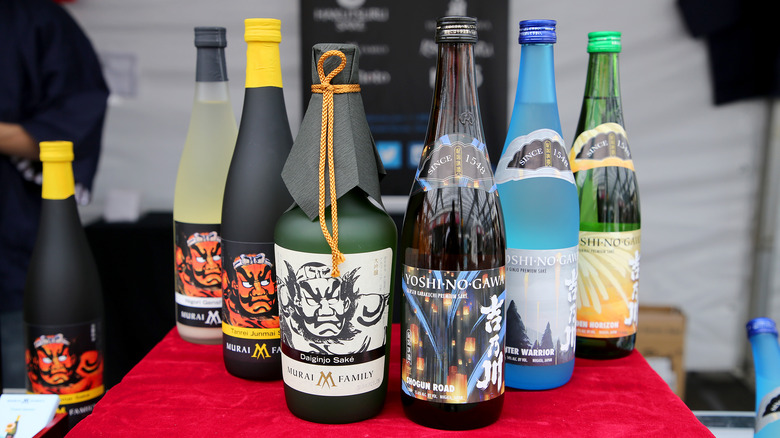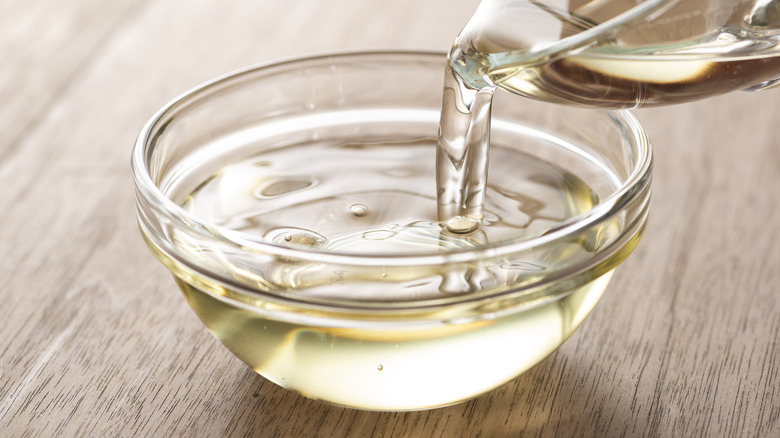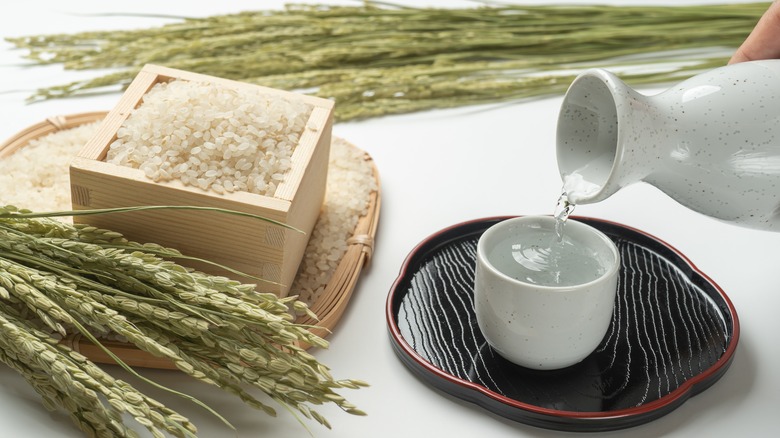The Key Difference Between Cooking And Drinking Sake
These days, sake is more accessible and beloved than ever. This Japanese rice wine, which is a common ingredient in a lot of traditional dishes, can be found on the menu of almost any sushi restaurant, and there's even been a rise in domestic sake in America. But, what if you're buying it for home use? You can likely buy a bottle at your local liquor store, but if not, it could be difficult to source. Depending on your state's liquor laws, it might not be available at your nearest market.
What you might come across instead at the grocery store is cooking sake, also known as Ryorishu. Cooking sake, which is sold for use in food and not meant to be consumed straight, is similar to sake in many ways. But cooking sake has added salt, and less of the natural sweetness of the traditional rice wine. It can be a useful replacement for sake, but there are some drawbacks you may wish to consider.
Should you use cooking sake?
Just as there are conflicting opinions on cooking wine (some say you should only prepare dishes with quality vino, while others say you should never spend more than $10 on it), there can be some confusion around cooking sake. Generally, cooking sake has a better reputation than cooking wine, and is commonly used in many Japanese households. Detractors will say that it lacks the complexity of the drinking variety of rice wine, and some can be cheaply made and pumped full of additives like amino acids to intensify the flavor, all of which can come through in cooking.
It's true that you absolutely do not want to drink cooking sake straight, but that doesn't necessarily mean that it doesn't have a function. The concentrated flavor of cooking sake is designed to season food without needing to add a lot of additional salt or acid. It adds umami flavor to dishes, tenderizes meat, and contributes a distinctive undertone to a dish to make it taste more authentically Japanese.
Dishes to make with cooking sake
Cooking sake can be used for many savory dishes, like teriyaki, Okinawa soba, and Kenchin-jiru. You can also use it to steam seafood like clams or mussels, in lieu of white wine. But if you are making desserts with it, it's recommended to use drinking sake instead, for its more subtle and floral flavors.
Drinking sake doesn't have a very long shelf-life (it's good for about a week after opening), so cooking sake can be a good replacement if you don't like to imbibe rice wine. But if you do enjoy sake, it might serve you better to simply purchase a cheap drinking variety and use that for cooking. Whatever is left over, you can serve alongside your meal for an extra Japanese touch.
Look for simple, classic sake varieties like Junmai and Honjozo, which will be less expensive than more premium varieties like Junmai Ginjo or Junmai Daiginjo, as the nuanced flavors of more expensive options might not come through in your dish. The choice comes down to your personal tastes, and the accessibility of rice wine in your area.



